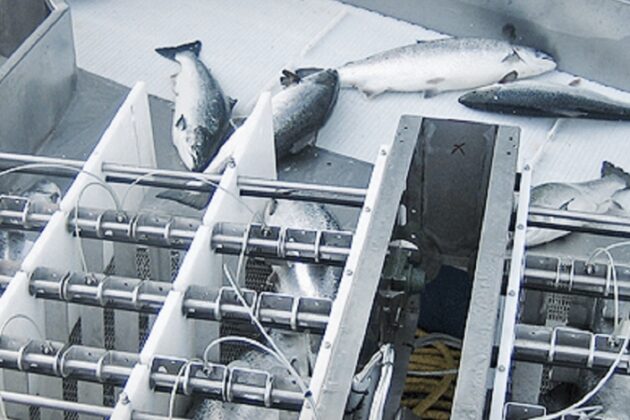Robotic Washing
Robotic washing of fish processing machinery and fish slaughterhouses

The project was aimed at creating robots that can clean machines used in fish processing and fish slaughterhouses.
Start
01. Jun 2015
End
31. May 2018
Funded by
The Research Council of Norway
Cooperation
SeaSide AS, Høgskulen i Ålesund, Summit Systems, M. E. Birknes AS, Lilleborg, NTNU-Sintef
Project Manager(s):
Background
Cleaning of fish processing equipment and fish slaughterhouses is currently very demanding. Cleaning is mostly carried out at night, and is done manually by cleaning operators. The work is physically demanding, the cleaning requires extensive use of chemicals and the process is costly.
The authorities and customers also set increasingly stricter requirements to the quality of the fish, more documentation of satisfactory cleaning, delivery times and delivery precision.
Robotic Solutions
There are currently no technological solutions on the market for robotic washing of fish processing machinery and fish slaughterhouses. The washing processes are demanding and complex, and there are a number of technical systems to consider.
Two robotic systems were developed in the project. Firstly, a conventional low-cost industrial robot (UR10) was adapted with longer arms and nozzle holders to increase the range, mounted on a linear axis and evaluated. The results of this were promising, and a prototype for industrial use was developed. This system consisted of a serial manipulator designed for the purpose, mounted on a horizontal transport system. Comparative washing tests were performed with the prototype and manual washing performed by professional fishing industry cleaners.
The conclusion is that robotic systems can wash as well as, or better than, manual cleaning, even if the system in its current form has its limitations. Robotic systems have repeatability and reproducibility compared to human operators and can thus potentially ensure better hygiene and control over bacteria in the fishing industry. In addition, human contact with harmful chemicals is limited, and the use of chemicals and water can be reduced.
Do you want to find out more about this development and how the robotic solutions were evaluated by washing an experimentally contaminated electrical stunner? Read more here
Publications
Research areas